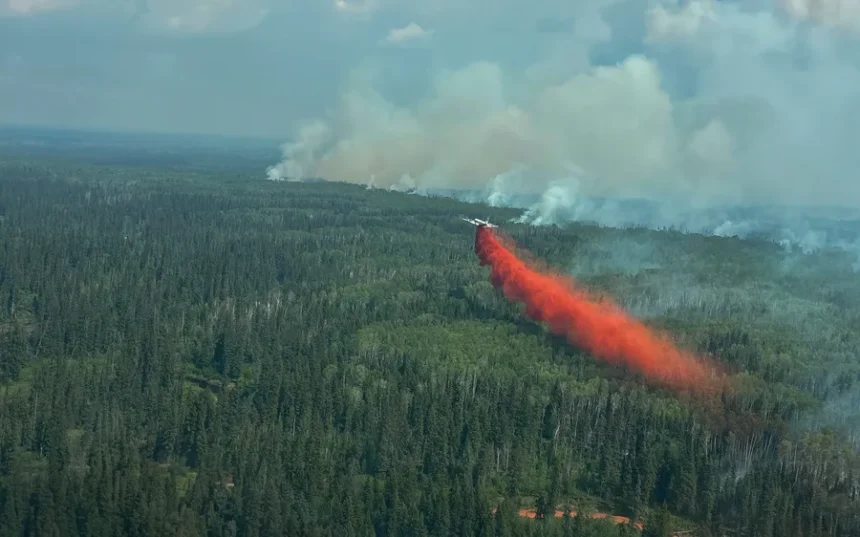So-called “Zombie fires,” which smolder underground in Canada throughout the winter, have reignited with the arrival of warmer weather, contributing to an intense start to the country’s wildfire season, scientists report.
Scientists are actively studying this increasingly frequent phenomenon, where ground fires ignite in the summer and continue to burn slowly beneath the surface through the subsequent winter. Peat and moss, common in northern regions, help sustain the flames even under layers of snow.
“The snow cover actually insulates the fire,” notes Thomas Thorerer, a fire expert and researcher at Scotland’s University of Aberdeen, as reported by the Financial Times. “As conditions become warm and dry again in the summer, the fire continues to spread and resurfaces, potentially re-emerging as a blazing forest fire.” Such fires are more challenging to contain and extinguish because they are harder to detect and access.
The British Columbia Wildfire Service reported that as of mid-week, the province had 49 active wildfires that had persisted underground since the 2024 fire season. Jen Baron, an ecologist at the University of British Columbia, stated that these “zombie fires” are a contributing factor to the current severe situation, and they would not reactivate if weather conditions remained colder and wetter.
The smoke from these fires has traveled as far as Europe and the United States. Tens of thousands of people have been evacuated from affected areas, and about 5% of Canada’s crude oil production is at risk due to the closure of key production facilities in Alberta.
Scientists note that “zombie fires” are not sufficiently researched because they were once a very rare occurrence, but “now they are everywhere.” A study published earlier this year suggests that such fires smoldering near the surface can be extinguished by moisture from melting snow, but this will not affect fires burning deep in the soil.
While fires are a natural part of the boreal forest’s life cycle, global warming is exacerbating the situation as weather conditions become increasingly dry. “Climate change plays a role because summers are warmer, allowing more fires to remain in the ground, and then the snow insulates them, and they return to the surface much earlier because springs are also warmer,” said Guillermo Rein, a professor of fire science at Imperial College London.
Peatlands are vital for storing carbon dioxide, containing more carbon than all the world’s forests combined. Fires in such areas can release this stored carbon back into the atmosphere, further contributing to climate change.







